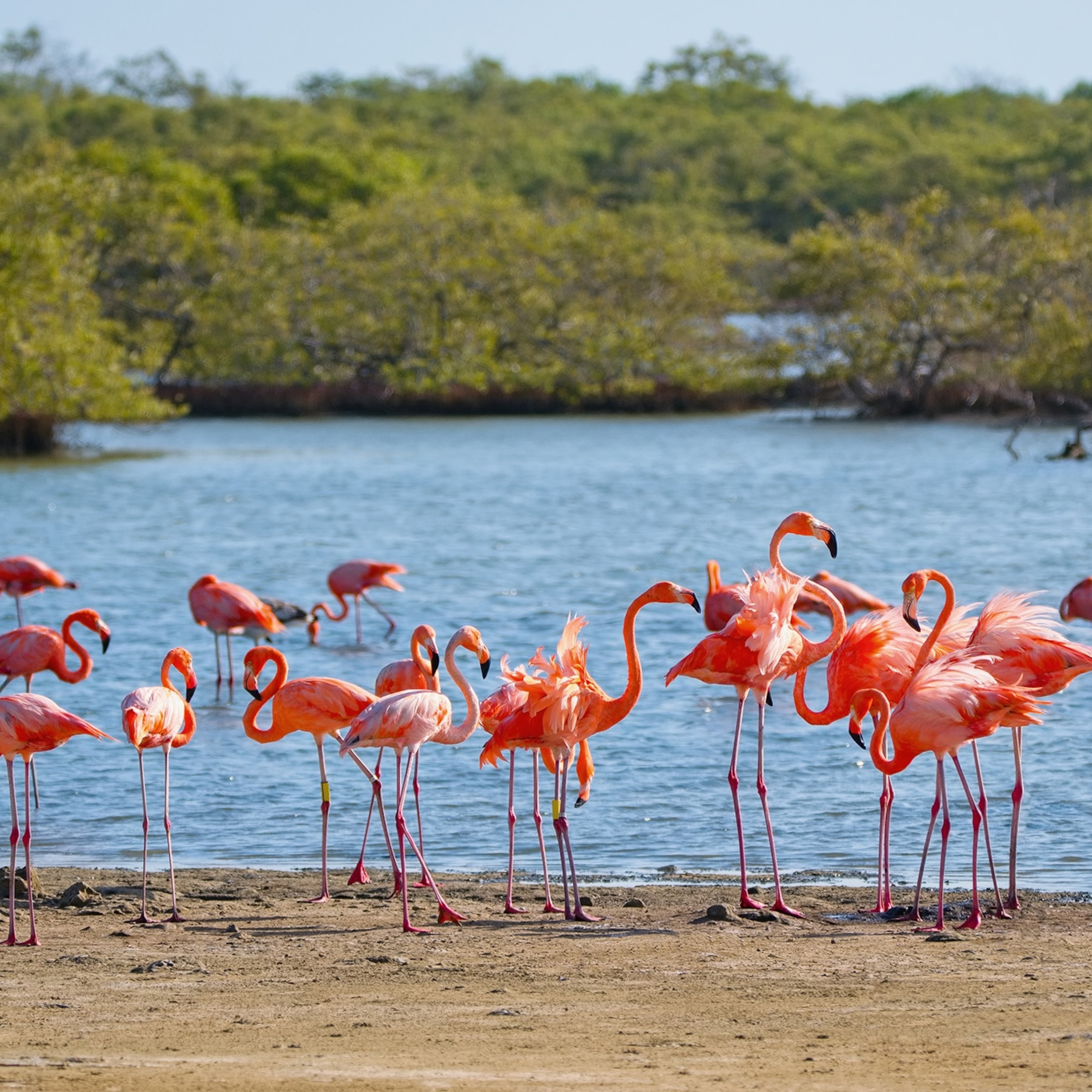
Fiery blooms and dancing birds: Tobago’s jungles are full of life
This tiny Caribbean island has the oldest protected wilderness in the western hemisphere. More than 200 bird species call this rainforest home, from the rufous-tailed jacamar to the tiny white-tailed hummingbird.
“The island is shaped like the shell of a leatherback turtle,” my guide, William Trim, says, touching his long fingers together to illustrate a dome, “and we’re approaching the upper ridge — the heart of Tobago.” William and I have left behind the lazy coves of the coast and climbed by car to the island’s crest. Here, a lush canopy carpets the land, the sea of green broken only by the electric-yellow umbrellas of blooming poui. Tendrils of mist hang above the treetops. I can see the Atlantic on one side and the turquoise counterpane of the Caribbean stretching towards a clear sky on the other. We’re heading to the Main Ridge Forest Reserve, one of the most biodiverse areas in the Caribbean and the oldest protected rainforest in the western hemisphere. “You can tell we’re getting closer. Look up,” he says. We’re passing through a village clinging artfully to the hillside; overhead, along the thin power cables, exotic plants have sprouted. “Epiphytes,” he explains.
William headed up the forestry division in Tobago for 17 years. He speaks of the reserve with quiet pride: “The world’s first environmental protection act was passed here in 1776. This tract was saved not just for the wildlife but to maintain our water supply — for evaporation, transpiration, percolation,” he says, the sonorous rhythms of his accent making poetry out of the water cycle. We park up, head down an unassuming path and are quickly swallowed by rainforest as dense and disorientating as the Amazon. We’re taking Gilpin Trace, one of nine hiking routes established in the 10,000-acre reserve, many of which follow Amerindian hunting trails. “About once a year, a visitor will get lost, lured away from the path by the diversity, the songs, the aromas. It is captivating,” William tells me. “I say it’s safest to take a guide: there are many intricacies that you’d miss otherwise.”

He finds in the reddish clay of an embankment the small, woven nest of a trapdoor spider. The portal to its cave flaps open on a silk hinge. It’s miraculous. We press on, following a stream deeper into the forest towards the crashing of a cascade. William points out lofty orchids with a laser that dances across the foliage like a firefly, and whistles calls to the birds. Together, Trinidad and Tobago have more avian species than the rest of the Caribbean combined. Some 100 can be seen in the reserve — over 100 more can be found around the island’s mangroves, wetlands and rocky islets. We spot a gorgeous white-tailed sabrewing hummingbird, which appears ahead of us in a clearing filled with the fiery blooms of heliconias. A rufous-tailed jacamar flies from its burrow, and we see a motmot drying its iridescent feathers on a sun-dappled branch. Lower down, among the ferns and undergrowth, William sights geckos, scuttling crabs, frogs and a pale, non-venomous snake.
It’s said that every day is lucky for bird watchers in Tobago, but while exiting the forest we alight upon a special scene. A tree is draped with dozens of woven nests suspended like teardrops from branches and swaying lightly in the breeze. With his binoculars William spots two weavers on high-up boughs: crested oropendolas, known as yellow corn tail birds locally. “Look! The courtship dance!” William whispers excitedly, passing the binoculars to me. The larger male fans out his canary-yellow tail and dips his beak towards his talons in a kind of dance. “The nests are often turned into headdresses for our carnival celebrations,” he explains. “That’s what I love about this place. For every bird, every plant, every person and every thing, there’s a story to tell.”
Two more activities for nature-lovers
1. Nesting turtles
Drop anchor and wade out of the ocean onto Cotton Bay, where the sand of this remote cove may likely be covered in telltale ripples — the purposeful pattern of a nighttime visitor. These are impressions made by the giant fins of a leatherback turtle. Under the cover of darkness, females propel their bulky bodies across the beach to lay their eggs. Tobago has been a habitat for five turtle species for millennia; they’re a common sight along the northern coast between March and June each year. It’s just a matter of timing and a little luck.
2. Coral planting
Lanya is the head ecologist at Environmental Research Institute Charlotteville, which can train eco-conscious travellers to scuba dive and participate in the global citizen science project Reef Check. Every day, clad head to toe in scuba gear, she’s out on the reef, harvesting and planting coral in Tobago’s nursery. It’s a complex task, but one that's crucial to the reef’s survival. “Luckily, the damaging effects of El Niño elsewhere in the Caribbean haven’t been seen here, although other factors are taking a toll,” she says. “What we’re growing should help to add complexity to the reef again.”
For more information visit visittobago.gov.tt
Follow National Geographic Traveller (UK) on social media





